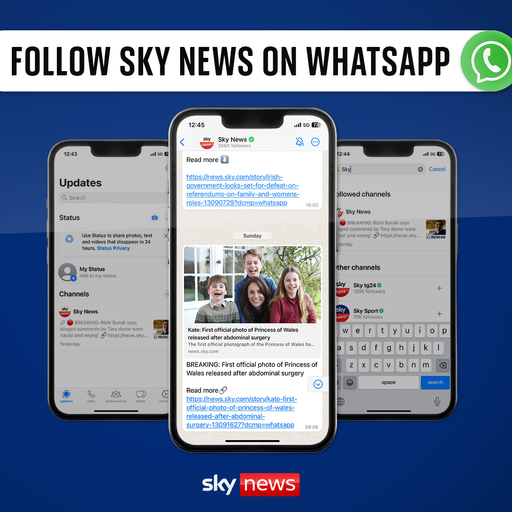While Hezbollah is the most powerful and well-armed of Iran’s proxies – the so-called “axis of resistance” spreads far and wide.
Iran’s Revolutionary Guards and its elite Quds Force give out millions of dollars in funding to arm and train militia groups throughout the Middle East to assert power in the region.
The axis is a key part of Iran’s foreign policy, which aims to destabilise “rivals” such as Israel and Saudi Arabia.
All of which is why the world is waiting to see how Iran responds to Israel attacking Hezbollah in Lebanon.
Here, Sky News looks at the different forces in countries throughout the Middle East that are backed by Tehran.
Hezbollah
Hezbollah has been of particular concern for Israel in recent weeks, with the Israeli military beginning a ground operation on Tuesday.
More on Iran
Related Topics:
The group’s heavy presence in southern Lebanon, near the border with Israel, makes it of huge strategic importance to Tehran.
Last weekend, Hezbollah’s Shia political and military faction leader Hassan Nasrallah was killed in Israeli attacks in Beirut.
Advertisement
A passionate and fiery orator, Nasrallah was one of the most influential leaders within Iran’s “axis of resistance”. His death was seen as a big blow to all the groups involved.
Image: The death of Hassan Nasrallah was seen as a big blow to the ‘axis’. Pic: West Asia News Agency / Reuters
Hamas and Palestinian groups
Iran also provides funding to Hamas, with analysts believing the group’s use of drones to help overwhelm Israel’s famous Iron Dome defence system in the 7 October attack was proof of Iranian involvement.
However, Tehran temporarily withdrew funding from Hamas when it came out in support of anti-Assad protesters in Syria during the civil war.
Its smaller rival, the Palestinian Islamic Jihad, also receives funding from Iran, as does the Popular Front for the Liberation of Palestine (PFLP) and the Democratic Front for the Liberation of Palestine (DFLP).
Sky’s military analyst Professor Michael Clarke said in October last year these smaller groups are “not very well organised”.
Spreaker This content is provided by Spreaker, which may be using cookies and other technologies. To show you this content, we need your permission to use cookies. You can use the buttons below to amend your preferences to enable Spreaker cookies or to allow those cookies just once. You can change your settings at any time via the Privacy Options. Unfortunately we have been unable to verify if you have consented to Spreaker cookies. To view this content you can use the button below to allow Spreaker cookies for this session only.
Enable Cookies Allow Cookies Once
👉 Click to subscribe to the Sky News Daily wherever you get your podcasts 👈
Syrian groups
Iran’s military, security and intelligence services have long assisted its allies in Syria to help prop up Bashar al Assad’s government there.
Strategically, as well as al Assad’s army, it has also backed several pro-government militia groups in case his regime falls.
Supported divisions include the Fatemiyoun Brigade, the Baqir Brigade, the Zainebiyoun Brigade, and Quwat al Ridha.
Follow Sky News on WhatsApp
Keep up with all the latest news from the UK and around the world by following Sky News
Tap here
Yemen and the Houthis
Iran uses the Houthi rebels, one of three groups fighting for power in Yemen, as a “proxy force” to put pressure on its two main rivals in the region, Israel and Saudi Arabia.
Prof Clarke said last year the rebels are “prepared to make war on just about anybody” and suggested “it suits the Iranians to keep the Houthis going”.
A ballistic missile fired by the Houthis reached central Israel in September, with local officials saying parts of the missile fell on a train station and in an unpopulated “open area”.
Source : Sky News










